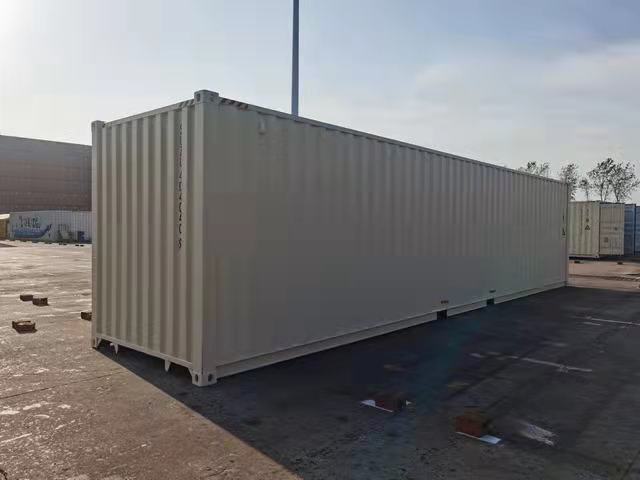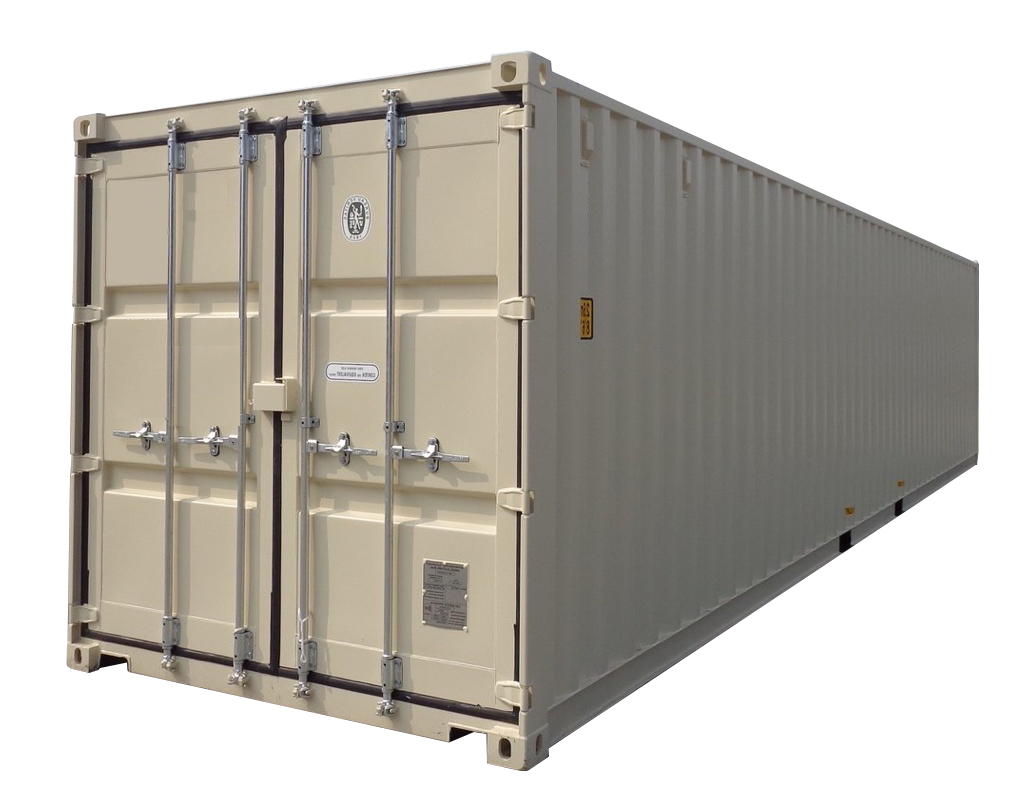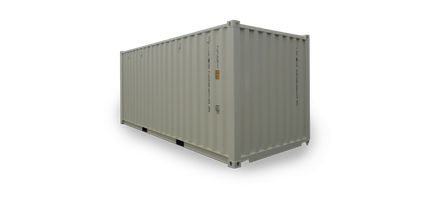Why You Shouldn’t Wait to Shop New Shipping Container 40 x 8 x 9.6 for Disaster Relief Projects
Why You Shouldn’t Wait to Shop New Shipping Container 40 x 8 x 9.6 for Disaster Relief Projects
Blog Article
The Ultimate Overview to Choosing the Right Delivery Container for Your Demands
When it concerns selecting the right delivery container, understanding your certain needs is necessary. You'll desire to take into consideration elements like size, kind, and material to assure you make the finest selection. From basic dimensions to specialized options, there's a great deal to discover. Plus, budgeting for both the container and any type of alterations can make a large distinction. Allow's damage down the vital elements to aid you discover the best fit for your requirements.
Comprehending Shipping Container Sizes
When you're selecting a delivery container, comprehending the different dimensions readily available is important for making the best choice. Delivering containers generally are available in common sizes of 20 and 40 feet, but you'll likewise discover other measurements. Recognizing the size you need depends upon what you prepare to shop or transport.If you're moving smaller sized products, a 20-foot container may be ideal, while larger shipments usually call for a 40-foot container. Remember that the height can likewise vary; high dice containers supply added upright room, which can be advantageous for taller goods - Rent New Shipping Container 40' x 8' x 9’6".Before choosing, measure your freight, and take into consideration just how much area you'll need for loading and unloading. Always element in possible future demands-- choosing a slightly bigger container might conserve you trouble down the line. Eventually, selecting the appropriate size will boost efficiency and ensure your items are safe throughout transportation
Kinds Of Delivery Containers Available
There are a number of types of delivery containers readily available, each developed for particular objectives and freight requirements. The basic completely dry container is flexible, perfect for basic freight. If you're delivering perishable items, consider a chilled container, which maintains a regulated temperature. For large items, high cube containers supply extra elevation, accommodating taller loads.If you require to transfer hefty equipment or equipment, flat shelf containers offer a durable base without wall surfaces. On the other hand, open-top containers permit for easy loading of tall freight, with a detachable tarpaulin covering for protection. If you're trying to find adaptability, think about a collapsible container that can be easily kept when not in use.Lastly, specialized containers like container containers are used for liquids, while vented containers are created for bulk freight that requires air flow. Knowing your cargo type will certainly aid you choose the best container to satisfy your delivery requires effectively.
Material Factors To Consider for Resilience
When picking a delivery container, the product plays a vital role in its resilience. You'll want to weigh the benefits of steel versus aluminum, especially pertaining to rust resistance. Recognizing these variables can aid you make an extra educated selection for your delivery requires.
Steel vs. Aluminum Containers
Exactly how do you choose in between steel and aluminum containers for your shipping needs? Beginning by considering toughness. Steel containers are durable and deal exceptional stamina, making them optimal for heavy lots and rough problems. They withstand damage from influences and are frequently cheaper, which can be a significant aspect for budget-conscious buyers.On the other hand, aluminum containers are light-weight, which can conserve you on shipping costs. They're easier to navigate and are a wonderful selection if you need to transfer items often. Nevertheless, aluminum is usually a lot more expensive and much less robust than steel. Weigh your details requirements thoroughly, consisting of weight, expense, and the type of freight you'll be shipping, to make the appropriate option for your scenario.
Deterioration Resistance Aspects
Choosing the ideal material does not simply involve weight and price; rust resistance plays a considerable duty in resilience. When choosing a delivery container, take into consideration the setting it'll face. Steel containers, while solid, can rust if not correctly treated. Seek options with safety coverings or galvanization to boost their life expectancy. Light weight aluminum, on the other hand, supplies natural corrosion resistance, making it ideal for seaside find out areas or damp problems. However, it can be a lot more costly. In addition, examine the container's use-- if it'll be revealed to chemicals or severe weather condition, focus on materials that can stand up to these problems. Purchasing a corrosion-resistant container now can save you from expensive repairs or replacements down the line. Select carefully for lasting benefits.
Alterations and Modification Options
Delivering containers aren't just for moving products; they can be changed to fulfill your particular requirements via different alterations and personalization choices. You can convert a basic container right into a comfy workplace, a momentary retail store, and even a personal gym. The opportunities are virtually endless.Think about including windows, insulation, or air flow to improve comfort. You might likewise think about electric circuitry, pipes, or even customized shelving to boost performance. If safety's a concern, enhanced locks can give peace of mind.For aesthetic charm, you can repaint the container or add a distinct design to make it attract attention. Don't forget regarding floor covering options-- whether you want sturdy plywood or something much more sophisticated, it can raise the space.Ultimately, tailoring your delivery container to suit your needs can enhance usability and develop a special environment that shows your style.
Examining Your Transportation Requirements
When it comes to using your customized shipping container, understanding your transportation needs is vital. Start by identifying what you'll be shipping-- whether it's hefty equipment, retail items, or individual items. Each sort of cargo has different requirements relating to dimension, weight, and accessibility.Next, think about the range and mode of transport. Are you delivering in your area, country wide, or globally? This influences the container's style and capability. If you're using trucks, ensure your container fits standard measurements for easy loading and unloading.Additionally, think of transportation problems. Will your items need special security from climate or temperature level fluctuations? If so, you could need insulation or ventilation attributes in your container.Lastly, analyze how commonly you'll be transferring products. Regular deliveries might need a more sturdy and flexible container to meet recurring needs. By addressing these factors, you'll be well-prepared to choose the best delivery container for your needs.
Budgeting for Your Delivery Container
Establishing an allocate your delivery container is essential for guaranteeing a smooth getting procedure. Identify how much you can afford to spend. Prices can vary significantly based on size, condition, and kind. New containers commonly cost a lot more, however used ones can offer significant savings.Next, consider any additional prices you may incur, such as transport costs, distribution costs, and alterations. If you prepare to personalize the container, consider those expenses also. Research study different distributors to compare prices and discover the very best offer that meets your needs.Don' t forget to consist of any type of permits or policies that may use to your purchase and use the container. By Source clearly detailing your budget plan, you'll be better prepared to make enlightened decisions, guaranteeing you get the right container without damaging the bank.
Upkeep and Take Care Of Longevity
To guarantee your shipping container lasts for years, routine maintenance is essential. Start by examining the outside for rust, damages, and damage. If you find any type of issues, resolve them right away to prevent additional degeneration. Tidy the container periodically, both throughout, to remove dirt, debris, and dampness that can result in corrosion.Ensure the doors seal correctly and oil the hinges to stay clear of corrosion and sticking. If you're using the container for storage space, consider adding air flow to reduce humidity and mold growth. For added protection, use a rust-inhibiting paint or sealer annually.If your container's situated in a harsh environment, like seaside locations, you might need to boost upkeep frequency. Watch on the floor covering, also; any signs of wear ought to be fixed today. With these straightforward actions, you'll expand the life of your shipping container substantially.
Regularly Asked Inquiries
How Do I Locate a Reputable Delivery Container Distributor?
To discover a reliable delivery container distributor, start by investigating on the internet evaluations, requesting referrals from good friends or industry contacts, and comparing prices. Constantly examine their credentials and guarantee they provide top quality containers that satisfy your requirements.

Can I Lease a Shipping Container Instead of Buying?
Yes, you can certainly lease a shipping container as opposed to acquiring one. Several suppliers offer rental alternatives, which can conserve you cash and offer versatility if you just need it for a go to this web-site brief duration.
What Permits Are Needed for Container Positioning?

Are Delivery Containers Weatherproof and Ideal for Outdoor Storage Space?
Yes, delivering containers are typically weatherproof, made to endure severe problems. Their durable building and construction maintains your things safe and secure and completely dry, making them ideal for exterior storage space. Simply ensure appropriate ventilation to stop dampness buildup inside.
How Do I Transfer a Shipping Container Once Purchased?

Report this page